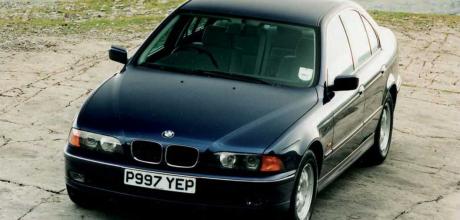BMW E39 Ignition Switch Replacement

We address a common issue on the E39-generation 5 Series, if yours is playing up here’s how to save yourself a bit of money with our easy fix.
Ignition switch failure was one of the first problems that cropped up on the E39, and it took some working out what the problems were. No doubt they were similar to the ones I experienced recently driving a 1997 528i on a 150-mile journey; the car started off with everything working and the first problem I found was that the previously working cruise control was missing in action. I hadn’t had the radio on otherwise I would have noticed it going off, and a further check revealed that we had no clock, very intermittent wipers, no washers and that the interior lights were constantly fading in and out. Oh, and the driver’s window had lost its one touch feature. Over the remainder of the trip, the wipers would occasionally work before stopping halfway up the screen. All hallmarks of a faulty ignition switch and these faults can also manifest themselves on the E46 3 Series that has the exact same switch (part number 61328363706 – that has been superseded by part number 61326901961). This switch has also been used on the E38 7 Series as well the first generation X3 (E83), X5 (E53) and Z4 (E85 and E86).
The cheapest new ones are around £16 delivered and the most expensive are of course from BMW, although it may now be NLA. Lots of sellers claim ‘OE’ and ‘genuine’ but we didn’t see any with the BMW or Valeo logos. It’s up to you which you buy – I bought a 16 quid new one and ended up fitting a known working Valeo original, carrying the new spare in the car just in case.
- 1 The first job is to drop down the lower steering column trim cowling and you do this by removing the centre screw in the plastic rivet in the centre of the trim cowling. Using light pressure only, the cowling comes down. It’s also secured by two tiny Torx screws but you can leave the cowling like this. You can remove the upper cowling if you like but it’s not essential.
- 2 We can now see most of the ignition switch. It’s covered by a very thick and strong bit of plastic that has to be slackened off so that the switch can be pulled free past it. You can also see here some steering wheel airbag wiring – do not disconnect this as you’ll have to reset the light. Carefully cut off the tie wrap (see blue dot) holding the two yellow wires, and fit a new one on reassembly.
- 3 Cutting off that tie wrap enables the airbag wiring to be extended enough for the orange/black airbag connector to be unclipped from the plastic bracket. Use a tiny screwdriver to push the small locking tab sideways (see the green dot one the previous photo) and push the connector away from the wheel. Pull this tab seen here to the left and the ignition switch connector will slide up and out.
- 4 Seen here, the steering wheel and airbag connectors have been disconnected from the black plastic bracket and tucked to one side. The red dot here show the position of one of the two ignition switch retaining screws. At the factory they are covered in a red paint so you just use a very small flat blade screwdriver to dig the paint out and slacken (but not remove!) the screws.
- 5 The black plastic bracket is secured to the top part of the alloy steering lock housing by a T30 Torx screw. This needs to be removed so that the plastic bracket can be moved enough to get the ignition switch out. It’s quite fiddly and I find the best tool is ¼ inch drive but you can get a skinny 3/8 drive socket in there. The screw isn’t done up very tight so it’s not hard to remove. In photo 4 you’ll see the lower T30 screw – just slacken that but don’t remove it.
- 6 With the bracket loose, you can access the upper red paint covered screw securing the ignition switch into the alloy lock housing. Slacken this until the tiny screw is just proud of the housing and the switch will come out. Don’t remove the screws as they are a sod to refit assuming you can find them once dropped. Shown here are the original pale grey and replacement black switches.
- 7 Inside the switch are six spring loaded brass contacts and over the years they oxidise and begin to lose contact so they sometimes work but begin to fail as they get hotter. Forget trying to repair one because they are hard to dismantle and reassemble again.

